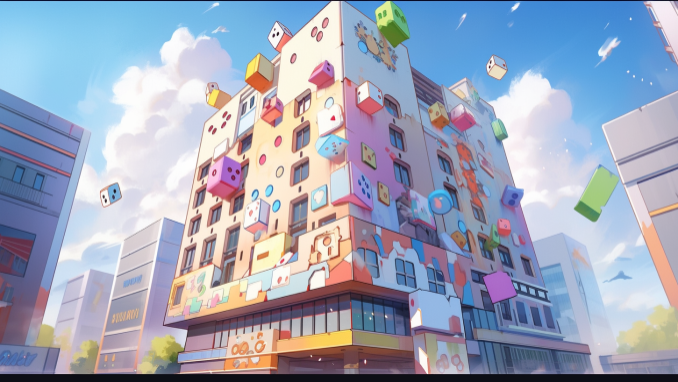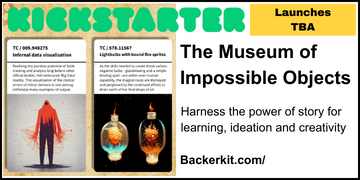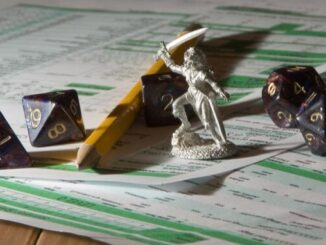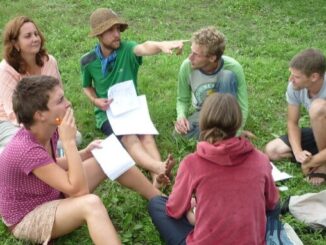
Ludogogy has entered into an agreement with Gamification Journal, based in Seoul, South Korea, for the mutual exchange of articles. This is the nineteenth of those articles we are publishing and it was in exchange for Eduardo Nunes’ article – Worldbuilding in Games-based Learning Environments.
Gamification is an innovative methodology to get people to participate and be motivated and help them achieve goals by applying game design elements and methods into a non-game environment. The library can provide an interesting experience to users by utilizing gamification, and gamification can make the library more fun and engaging.

Utilizing gamification in the library
- Educating library users: Gamification makes users feel entertained and engaged, and they learn about utilizing library resources. The library at North Carolina State University provided a gamified Scavenger Hunt, so students could learn how to use the library by interacting with librarians. Users can understand and utilize the library better through fun games.
- Participating in library resource management: To allow better access to large-scale library resources, users can actively participate in the work through gamification. In the National Library of Finland, the Digitalkoot service provided an interesting game to users. It asked players to edit the text errors input by OCR (Optical Character Recognition) software. Digitalization work that was previously done manually, by crowdsourced volunteers, could be done by more general users. This could contribute to helping more people access the library resources.
- Experiencing personalized information service: Gamification can be utilized to effectively support solutions to individual information problems. For reading activities, especially, gamification elements such as challenges, rewards, and competition, can lead to consistent reading habits and make accessing necessary information more effective. Through gamified reading support service, users can personalize their reading history and interests. They will get information about future reading opportunities. In addition, they can the right level of challenges to enhance the power and motivation to continue to read. For example, Lemontree is a social game-based learning system at the University of Huddersfield, U.K., is a gamification case to effectively increase the learning performance of students by using library data. (Walsh 2014).
- Services to enhance social relationships: Interesting gamified library programs can attract more people to the library. Also, it can effectively provide the experience of making social relationships based on library resources. New York Public Library developed the augmented reality game ‘Find the Future at NYPL’ as part of the celebration of its Centenary. It’s about solving quests related to one hundred historical artifacts hidden in a library building. In the process of solving quests, 500 participants could write down personal stories based on their inspiration from the library collections. Through that process, a co-created book which included future stories was made.

Gamification to increase the public interest in library
Gamification enhances the role of the library as a social place in which everybody can participate and meet. Through gamified programs, users can access library resources more effectively. Gamification can stimulate lively interactions between librarians and users, leading to strengthened social relationships. According to Koivisto & Malik(2021) whose article includes a meta-study of gamified research papers for the aged population, gamification was proven to effectively utilize in-person communication and increase relationship numbers in elderly people. According to this research (Koivisto & Hamari 2019), recognizing the self-efficacy of old people and positively increasing social emotions such as motivation and loneliness are possible through the program of enhancing social relationships by gamification.

How to apply the gamification to the library
The most important thing that gamification must focus on, is effectively increasing access to library resources. Rather than providing unconditional fun and flow, the library should emphasize the original vision and the purpose of the program. The library can be an amazing information environment for users by coordinating its resources and services with adequate gamification. To effectively apply gamification to the library, the following should be considered.
- Clearly defining the objective and results of the gamified program in accordance with the mission and vision of the library
- Applying the interesting gamified elements and forms by recognizing the participants’ demands, interests, and preferences
- Increasing the participants’ motivation by providing feedback, recognition, and rewards in program operation.
- Ensuring the system evaluates and measures the effects of gamification for library employees and participants
- Periodically monitoring and improving the operation of gamified programs based on evaluation
The world is changing, and the demand of users is changing along with it. In this changing landscape, gamification can play an important role in revolutionizing and reinventing the library for a new sustainable way of working. I expect that innovation in gamification methods will continue to bring new power to efforts to attract library users, into the future.
Burke, A. (2020, February 12). Mobile Scavenger Hunt. NC State University Libraries. from https://www.lib.ncsu.edu/projects/mobile-scavenger-hunt
Koivisto, J., & Hamari, J. (2019). The rise of motivational information systems: A review of gamification research. International journal of information management, 45, 191-210.
Koivisto, J., & Malik, A. (2021). Gamification for older adults: A systematic literature review. The Gerontologist, 61(7), e360-e372.
Lynch E.D.W. (2011, April 6). Find the Future Game at the New York Public Library. Laughing Squid. from https://laughingsquid.com/find-the-future-game-at-the-new-york-public-library/
Microtask. (2011, February 8). Digitalkoot Crowdsourcing Finnish Cultural Heritage. from https://microtask.com/blog/digitalkoot-crowdsourcing-finnish-cultural-heritage/
Walsh, A. (2014). The potential for using gamification in academic libraries in order to increase student engagement and achievement. Nordic Journal of Information Literacy in Higher Education, 6(1), 39–51.
- Libraries and Gamification - 30th November 2023





Be the first to comment